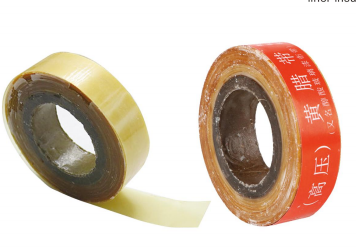Understanding Self-Adhesive Electrical Tape A Versatile Tool for Electrical Projects
Self-adhesive electrical tape, commonly referred to simply as electrical tape, is an essential item in the toolkit of electricians, DIY enthusiasts, and homeowners alike. With its unique properties and wide-ranging applications, this tape offers practical solutions for various electrical repairs and installations.
What is Self-Adhesive Electrical Tape?
Self-adhesive electrical tape is a type of insulating tape designed primarily for the purpose of insulating electrical wires and connections. Made from a flexible plastic material, typically vinyl, it has a peel-off backing, which allows it to stick securely to surfaces without the need for additional adhesives. Its self-adhesive quality ensures that it adheres firmly to wires and other surfaces, providing a reliable seal to prevent electrical shocks and short circuits.
Key Features and Properties
1. Insulation One of the most critical properties of electrical tape is its insulation capabilities. It can withstand a range of voltages, making it suitable for various electrical applications, from household wiring to industrial machinery.
2. Durability Electrical tape is designed to be resistant to wear and tear, moisture, and even limited exposure to chemicals. This durability ensures that repairs last longer, reducing the need for frequent replacements.
3. Temperature Resistance Most electrical tapes can operate effectively within a wide temperature range. They can withstand heat while remaining flexible, which is crucial for applications in environments that experience temperature fluctuations.
4. UV Resistance Some variants of self-adhesive electrical tape are made to resist ultraviolet light. This characteristic is particularly important for outdoor applications, where sunlight can degrade many materials over time.
Common Applications
self adhesive electrical tape

The uses of self-adhesive electrical tape extend far beyond everyday electrical repairs. Here are some of its more common applications
1. Wire Insulation The primary use of electrical tape is to insulate exposed wires to prevent electrical shocks and short circuits. This insulation is crucial for maintaining the safety and integrity of electrical systems.
2. Splicing Wires When joining two electrical wires, electrical tape is often used to wrap around the splice, providing a secure and insulated connection.
3. Bundling Cables Electrical tape can be used to bundle multiple wires or cables together, helping to organize and manage cabling systems in residential and commercial settings.
4. Marking As mentioned earlier, the color coding of electrical tape can assist in identifying different wires or circuits. This is particularly useful in complex systems where multiple wires are in close proximity.
5. Repairing Damage Whether it’s a minor cut in a wire or a fatigued connector, electrical tape can provide a temporary fix until a more permanent solution can be implemented.
Advantages
Using self-adhesive electrical tape is beneficial for several reasons. First, it’s cost-effective. A single roll can cover numerous applications, making it an economical choice for both professionals and home projects. Second, it’s easy to use; no professional training is required, and it can be applied with minimal tools. Lastly, it enhances safety by providing effective insulation and reducing the risk of electrical hazards.
Conclusion
In summary, self-adhesive electrical tape is an invaluable tool for anyone dealing with electrical systems. Its versatility, durability, and ease of use make it a preferred choice for insulating wires, repairing connections, and organizing cables. Whether you are an electrician, a DIY enthusiast, or just someone looking to complete a minor repair at home, having a roll or two of electrical tape on hand can save time, effort, and ultimately enhance the safety of your electrical projects.
-
XIANGFAN Rubber Tape-Ultimate Solutions for All Your Insulation NeedsNewsJun.24,2025
-
XIANGFAN Rubber Tape-Protection for Industrial and Residential ApplicationsNewsJun.24,2025
-
XIANGFAN Rubber Tape: Superior Safety and Sealing for Demanding EnvironmentsNewsJun.24,2025
-
XIANGFAN Rubber Tape: Reliable Solutions for Every Electrical ChallengeNewsJun.24,2025
-
XIANGFAN Electrical & Industrial Tape: Powering Reliability Across IndustriesNewsJun.24,2025
-
XIANGFAN Electrical & Industrial Tape: Excellence in Every ApplicationNewsJun.24,2025
